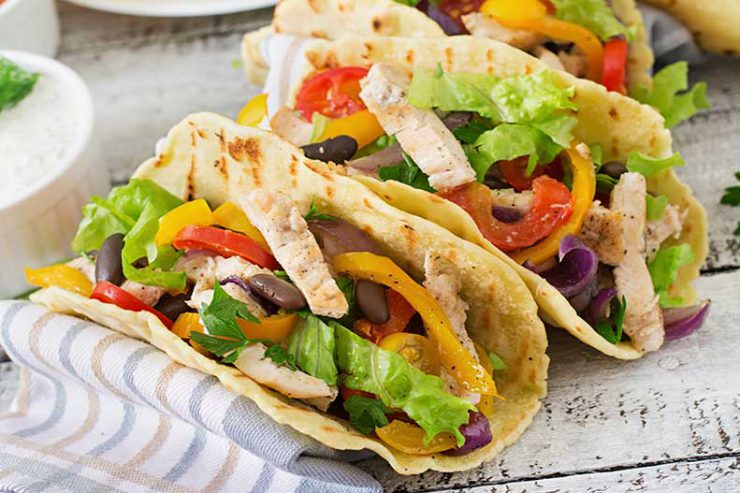Want to give your favorite Mexican recipes a heart-healthy makeover? By making some simple changes, you can cut down on the fat and salt and still keep the flavors you love.
Mexican dishes use plenty of fresh, healthy ingredients, and it’s easy to switch out some not-so-healthy choices for healthier options. Here are a few tips on making healthy Mexican food.
Never Miss a Beat!
Subscribe to Our HealthBeat Newsletter!
Thank you for subscribing!
You can now select the specific newsletters you'd like to receive.
You are already subscribed.
Subscribe to more newsletters in our email preference center.
Sorry, an error occurred. Please try again later.
Get Healthy Tips Sent to Your Phone!
Making Mexican Food Healthy: Start with Fresh Fruits and Veggies
Vegetables play a big part in many Mexican favorites. Take a look at the recipes you make most often, and you’ll probably find:
- Tomatoes. Packed with lycopene, folate, potassium, and vitamins A, B, C, and E, tomatoes offer plenty of flavor and nutrients. Think about making your own salsa, or just adding more diced tomatoes to your dishes.
- Peppers. With a wide variety from spicy to sweet, peppers can kick up the flavor and also add vitamins A and C, potassium, folic acid, and fiber. Larger peppers tend to be mild, while smaller peppers turn up the heat.
- Avocados. Although high in calories and fat, avocados offer a healthy type of fat that can help lower LDL, or “bad” cholesterol when eaten in moderation. Just keep an eye on portion size when enjoying guacamole or adding sliced avocado to your recipes.
- Beans. Loaded with protein, minerals, and fiber, beans make a great addition to many classic Mexican dishes. Be sure to drain and rinse canned beans before using.
Beyond these nutrient-rich foods, think about adding new flavors to your tried-and-true recipes, like:
- Jicama. This root vegetable that can be peeled, sliced, and tossed into salads and salsas for an extra kick of vitamin C, fiber, and potassium.
- Nopales. These pads of the prickly pear cactus (without the spines, of course) are loaded with fiber.
- Mangoes. One cup of mango has just 100 calories and can sweeten your dishes without adding any fat.
Get Spicy
To add more flavor to your recipes, look beyond the salt shaker. You can spice things up by choosing:
- Lemon juice or lime juice
- Cilantro
- Cumin
- Chiles
Make Healthy Swaps
Keep the fat, salt, and calories in your favorite recipes low by making healthy swaps.
- Broil, bake, or grill instead of frying.
- Pick corn tortillas instead of flour.
- Go for low-fat sour cream or cheese, and always keep an eye on your portions.
- Choose fajitas with plenty of vegetables instead of quesadillas.
- Boil beans, then mash them with low-fat milk or low-sodium vegetable broth for a similar texture to refried beans.
- If you’re having taco salad, skip the fried shell.
A registered dietitian — an expert in food and nutrition — can help you find even more ways to make your favorite Mexican recipes lower in fat and calories. To learn more, visit the UPMC Heart and Vascular Institute or call 1-855-UPMC-HVI (876-2484).
About Heart and Vascular Institute
The UPMC Heart and Vascular Institute has long been a leader in cardiovascular care, with a rich history in clinical research and innovation. As one of the first heart transplant centers in the country and as the developer of one of the first heart-assist devices, UPMC has contributed to advancing the field of cardiovascular medicine. We strive to provide the most advanced, cutting-edge care for our patients, treating both common and complex conditions. We also offer services that seek to improve the health of our communities, including heart screenings, free clinics, and heart health education. Find an expert near you.
